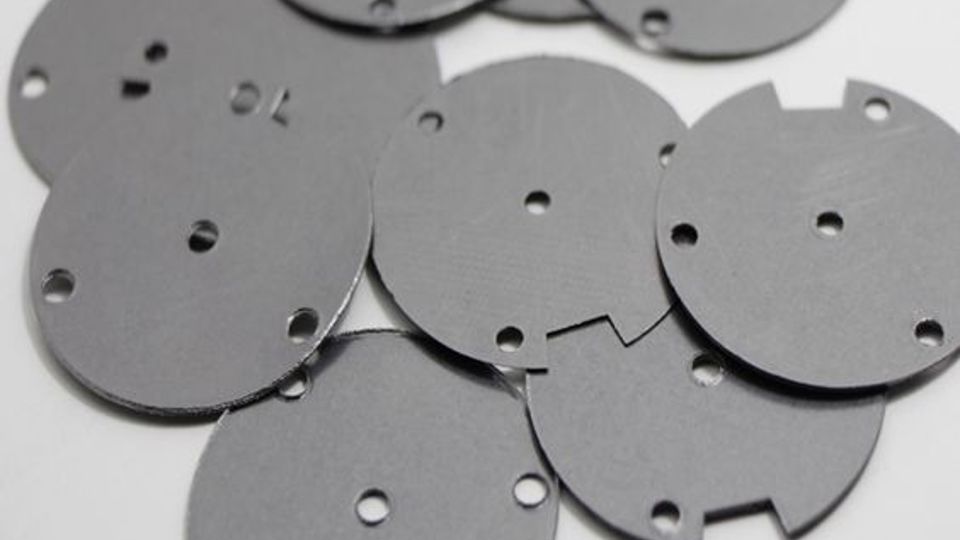Thermal Interface Materials (TIMs): Four Types of Die Cut Products

Thermal interface materials (TIMs) create a thermal path from a heat-generating component to a heat sink, a device that dissipates heat. In products such as LED lights, cell phones, and automotive batteries, heat that’s not discharged properly can reduce service life. In some cases, excess heat can even cause product failure.
Engineers who design lighting, power electronics, and other systems that generate excess heat can select various TIMs. Thermal greases and thermal epoxies have their advantages but don’t support die cutting – a fast, precise, and cost-effective manufacturing method. With die cutting, engineers can choose graphite gaskets, thermal pads and film, thermal tape, and gap fillers. How do these choices compare?
The following sections provide an overview of each die cut product. Subsequent articles in this series will examine each type of TIM in greater detail.
Graphite Gaskets
Graphite gaskets provide strong thermal resistivity, high compressibility, excellent resiliency, long life, and corrosion resistance. They dissipate heat evenly and rapidly across printed circuit boards (PCBs). Die cut graphite sheet materials are flexible and can be produced without fillers or binders. Flexible graphite gaskets are lightweight, come in a range of thicknesses, and support pressure-sensitive adhesives (PSAs).
Thermal Pads and Films
Thermal pads and films are thin, flexible materials that dissipate heat away from hot spots. Thermal pads are usually made of silicone-based materials with thermally-conductive fillers. Some are reinforced with fiberglass for increased tear resistance. Many thermal films are made of polyimide and known by a DuPont™ tradename, Kapton®.
Thermal Tapes
Thermal tapes are thermally-conductive materials that have an adhesive on one or both sides of a film or carrier. The thermally-conductive material consists of a polymer with fillers. The adhesive is usually a PSA for ease-of-installation. Most thermal tapes come with a carrier, but some die cut tapes consist of an adhesive that’s removed from the liner prior to application.
Gap Fillers
Gap fillers are sheet materials that consist of a base elastomer and a thermal filler. Typically, the elastomer is silicone rubber. Sheet thickness varies and may support the use of adhesives. Gap fillers can be reinforced with fiberglass, provide cushioning, or resist electromagnetic interference (EMI). There are many different types of gap filler materials, but sheets support die cutting for specific sizes and shapes.
Learn More about Die Cut TIMs
Would you like to learn more about die cut TIMs for thermal management? Future articles in this series will examine each type of TIM in greater detail. Would you like to learn more before then? Then contact JBC Technologies.
DuPont™ and Kapton® are trademarks or registered trademarks of E.I. du Pont de Nemours and Company.